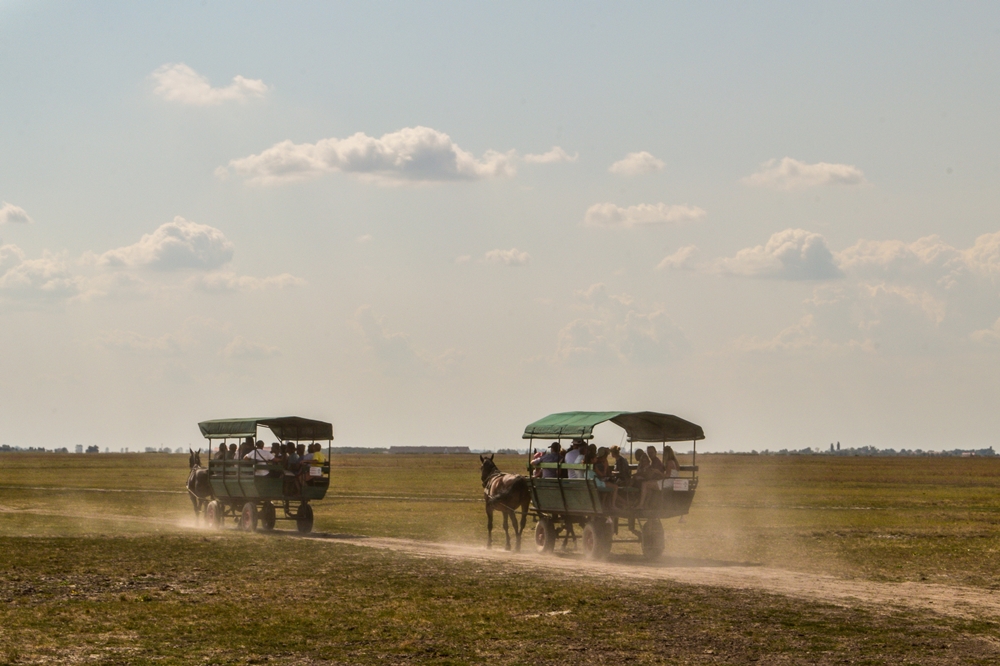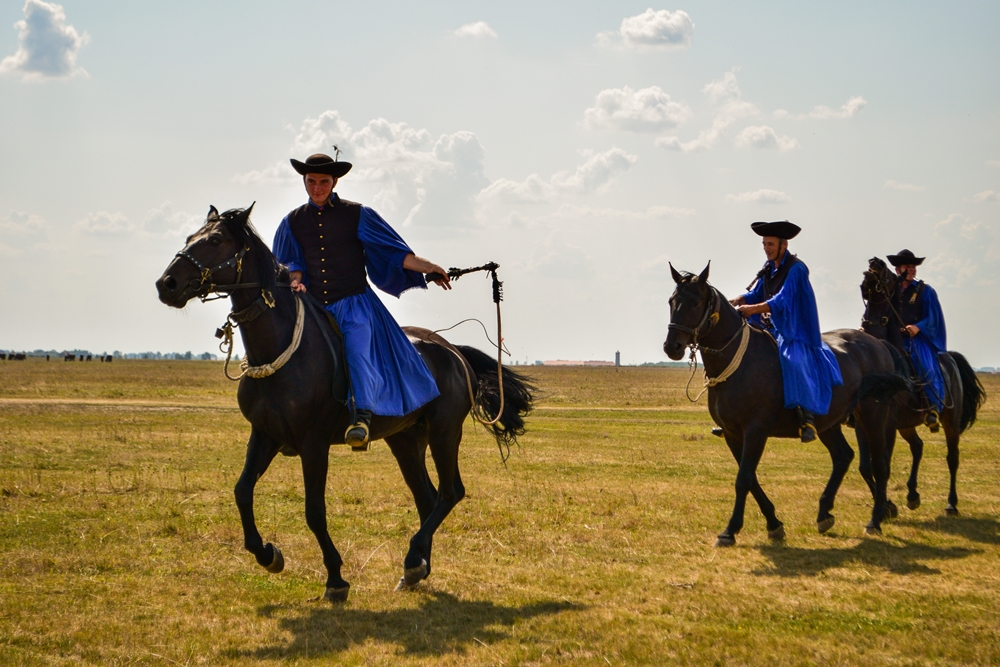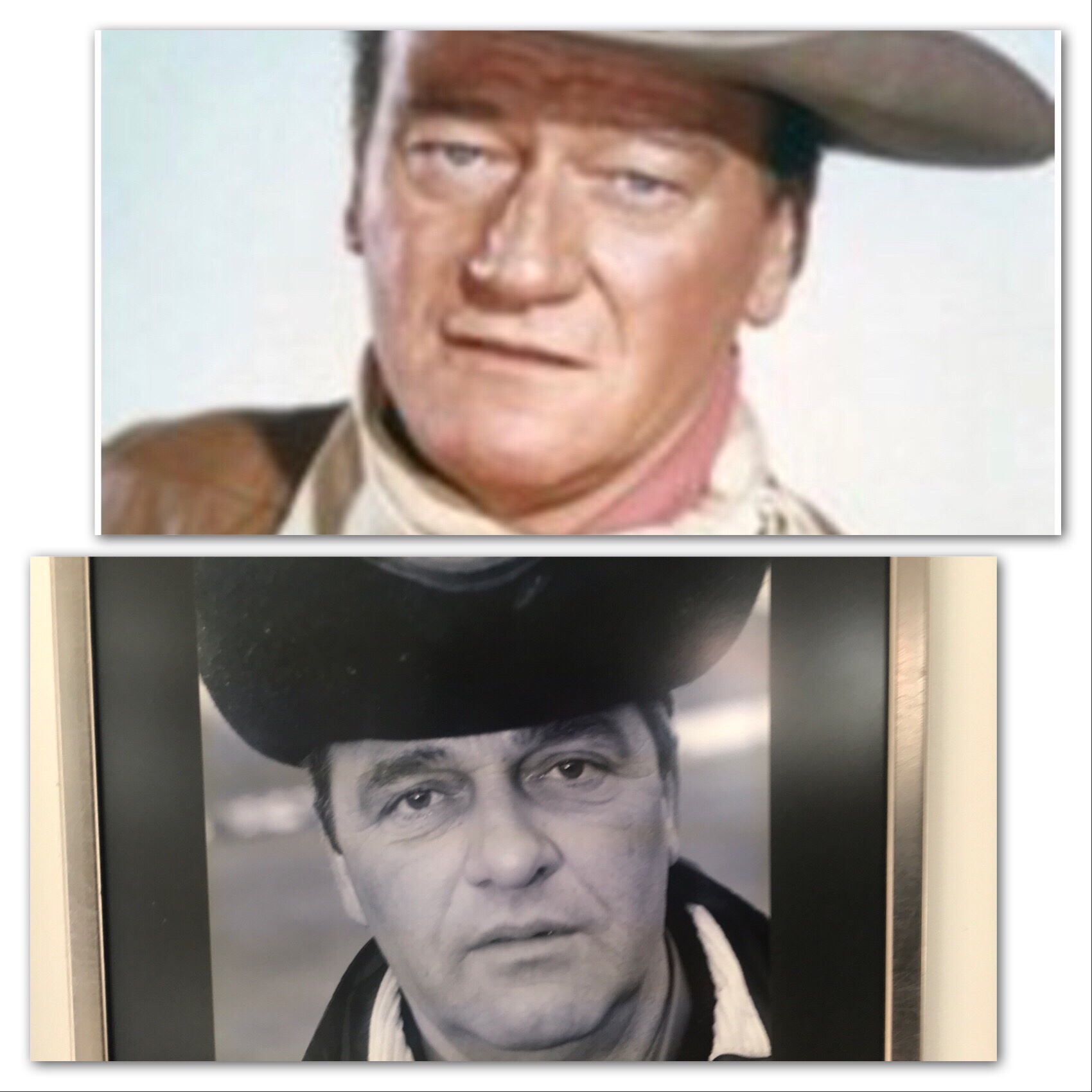We visited the Hortobagy National Park on a day trip while staying in the Eastern Hungarian city of Nyiregyhaza. It is Hungary’s first and largest national park and was given UNESCO World Heritage Site status in 1999 due to its rich cultural history and presence in folklore.
The great plain of Hungary is a continuous steppe forming part of the Eurasia steppe. It is an area of grassland with a continuous flat horizon. Coming from Ireland where a glacial hill is never far away, to look in all directions without an interruption until land meets sky is a novel sight. The steppe was formed by the Tisza river and by continuous grazing of animals over millenia. The park covers an area of 800km². The park is characterised by high alkaline lands and rivers and this poor land is perhaps how the distinct way of life developed.
Disclosure: This post contains affiliate links, which means I may receive a commission if you click a link and purchase something that I have recommended. While clicking these links won’t cost you any money, it will help keep this site going and me travelling. Thank you for your support.
Why visit the national park
The park is the torch-bearer of a culture that has long existed in this part of the country. It is reminiscent of the cowboy culture of the United States, and horsemen are celebrated. Lots of indigenous animals roam these parts from the Nonius breed of horses that the cowboys use to the Hungarian Grey Cattle, Buffalo and Racka Sheep. The park is also famed for its cranes, who inhabit its ponds in Autumn. Tours of the park allow you to check these animals in their habitat.
How to get there
Hortobagy is located around two hours drive from Budapest or for those who wish without cars a two-legged train journey from Budapest with a change at Fuzesabony will arrive you in the town of Hortobagy. We were staying in Nyiregyhaza a nearby city, and it took us 45 minutes to reach the park. We had rented our car from online company Rentalcars.com. The roads in this area are a little slow-moving and they are all secondary roads so bear this in mind.
Hortobagy Town
We arrived in Hortobagy town to an unexpected market and the town was alive. The market was a treasure trove of crafts and tit-bits from small town life. However the day was sweltering hot and we struggled to enjoy it. We paused to watch some couples performing the energetic Csardas dance which was the first time I had seen it in all my time in Hungrary.
It’s a small town without a great deal to see but it does serve well as a starting point for exploring the national park. You should visit the Hortobagy Visitor Centre, where an abundance of information is available on tours, and there is a small museum on the lives of those on the steppe, the animals and the birds, with particular emphasis on the cranes of the park. The craftsmans yard shows the intricate skills used to build the distinct buildings of the Puszta. The river of Hortobagy flows through the town and gives it its most famed sight, the nine holed bridge.

How to see the National park?
There are a number of ways to see the Puszta. There is a narrow-gauge train that travels 5km through it to reach Halasto which sits on a lake side. For those wishing to see the fauna of the lakes, including the many bird species this is the best option. This can also be reached by bike. This is the location of a magnificent sight in October as 30000-40000 cranes roost in the lake preparing for migration. Specialised tours run at sunrise at the time of migration as the birds take flight against the rising sun. All of this can be booked through the visitor center. The puszta is one of Europe’s only dark sky preserves and there is night time walks available.
We opted for none of the above. My fascination with the park came from seeing photos of the horse shows. Nina my daughter loves horses. So our motivations tied in together. We chose to see the park through the Mata Stud Farm. This is a 300 year old stud farm which ranks us amongst Europe’s oldest. The stud farm is located over three kilometres outside the town and unless you have wheels it is probable that a walk is necessary. This jovial milestone will let you know where to turn off.

En route to the farm we saw some beautiful typical architecture in play at the entrance to the local cemetery. Clever use is made of straw and wood in a traditional way.


![]() Search hotels and more...
Search hotels and more... Get the best rates now on a hotel in Hungary
Get the best rates now on a hotel in Hungary

Mata Stud Farm
There is ample parking outside the farm which we found of our volition as google maps had a rare glitch and sent us around in circles. The stud farm runs tours bi-hourly into the Puszta on a horse-drawn carriage. Tickets are available on the farm from the information desk and are priced at 2400huf for adults with kids half price. The tours run from April to October.
We took a stroll through the farm whilst waiting on our tour and got to see some of the magnificent horses up close. Many had foals or were in foal and they were all of the native Nonius breed of the area. This was a specially nurtured breed that was developed to work the harsh grounds of the puszta. Nowadays their lives seem less difficult without the strain.
Our tour was booked for 2pm and we boarded one of six horse-drawn carriages that would venture out into the plains. Once we left the farm behind, the romantic notion of settlers venturing into the unknown into America’s west entered my thoughts, as dust clouds rose off the ground, and we had our first experience of that great wide space. It’s somewhat dusty and windy on the carriage but the breeze was very welcome by us on this hot day. It’s also bumpy and wouldn’t be suited for pregnant women.

Our tour took us through a succession of stops to illustrate the life of the people who had settled here since 3000BC. We met the water buffalo and their herder (called Gulyas in Hungarian) that were taken here from Asia centuries before, and the Hungarian Grey Cattle an indigenous species of cow known for their slender build, large horns and toughness to survive harsh winters on the plain. A narrative is presented by a tour guide in both Hungarian and English. I took the opportunity to examine our Nonius Horses up close and see what a magnificent animal they were. Our driver and horse had a cantankerous relationship but they were friendly to approach.




As i mentioned before the story of the Puszta is one of the people there, who survived and prospered on this land. The most celebrated of these were the Csikos, the horsemen. They had a great control and relationship with their horses and this tradition continues to this day. We first saw them riding across the plains, before we met up with three of them. Brandishing whips (not for use on the animals, thankfully) they rode the animals whilst cracking the whips above their heads, before stopping and encouraging their horses to lie flat on the ground and play dead. It was a fantastic to see the relationship between horse and Csikos. Apparently this is a flashback to the times of raiders when both horse and Csikos had to hide in the grass for their safety.




The tour continued to a traditional farm where the local breed of sheep Racka Sheep were being housed. These unusual sheep have twisted and very pointy horns that somehow reminded me of an ice cream. Bear in mind it was hot. The buildings were more of an attraction though, with the barns built using the most impressive thatching I probably have ever seen, even taking into account the Cotswolds. They were beautiful with little eyelet glass windows, and were a show of great craftsmanship. The area was serviced by a traditional wooden well.



The Piste de Resistance
I had eagerly waited throughout the tour for something, and now it was to be. The image of the Puszta that always enthralled me and drew me there was that of a Csikos riding five horses, in the ultimate display of control. The carriages drew up towards a herd of horses in the distance and sure enough as we pulled to a stop, the rider which sat atop one, now rose himself into a standing position, one foot on each of the rear horses with three horses to the front. The horses galloped to the sound of bells, perhaps for guidance, but it was the Csikos act and he performed marvellously. These guys really are the cowboys of the east. Eastern Hungary that is.



We were returned to the stud farm. The Csikos are revered and their photos cover the walls of the visitor centre. One bore a resemblance to John Wayne. It all makes a little more sense now.

Where to eat and stay
If you stumble upon market day in Hortobagy there are plenty of dining options with large pots of Gulyas and Perkolt on the boil. But there is usually only one place to really eat in Hortobagy and that is Hortobagyi Csarda. It’s an 18th century eatery that tries to maintain the culinary traditions of the area. The restaurant itself is attractive with an exterior seated area, arches, and flower pots adding colour. Gypsy music adds to the atmosphere. The food was however was hit and miss. the Slambuc (a local dish) wasn’t of a great standard, but my fruit soup (all I could manage in the heat) was delicious.
This slideshow requires JavaScript.
Accommodation options also border on the non-existent but the best of the limited options is probably the Hortobagyi Kemences. All hotels can be seen and booked through booking.com but perhaps the area is best seen on a day trip as we did. The nearby cities of Debrecen and Hajduszoboszlo have more extensive options.
I hope you enjoyed my guide to Hortobagy and if you did please like or share.





19 responses
Great post 😁
Thank you
Extraordinary account of a place whose people have done well in preservation. The steppe is always more fascinating than its relative lack of features would first indicate.
I think it’s beauty lies in the preservation of culture. They certainly make a sparse landscape interesting
Fascinating. I’d not heard of this area before. The Csikos sound like an interesting people, kind of like the riders of Rohan in LOTR. Amazing they can hide in the open by having their horses pretend to be dead.
I never thought of the lord of the rings association. They were fascinating alright and it was great to see their world. It’s so far away from our modern day realities
Great post of a simpler way of life. Kind of like the Wild West in Canada, but with different costumes. Love the round bale art. We have a lot of that in Alberta and Saskatchewan in Canada. Thanks for sharing. Allan
It was an interesting place. I didn’t think anything like that still existed in Europe till I came across it whole researching. Certainly worth an outing. Cheers John
Wow, I love the wagons that you guys went in. And the horse show looks amazing!
It made me nostalgic of a place I’ve never been. It was a very enjoyable experience
Omg, I would totally enjoy this rustic adventure!! Pinned!
WOW!!! John, I love this post!! So unique. Seriously transformed into a different world. 😄
Fantastic read & photos was amazing! Really enjoyed seeing this area of Hungary & learned so much. Your article makes it easy to plan a visit here. Pinned!
Thank you. Glad you enjoyed it. Such an interesting place.